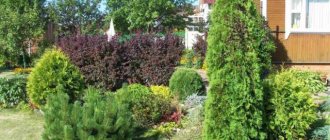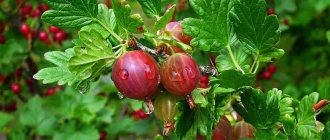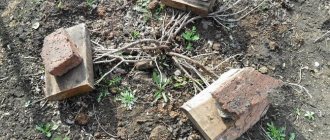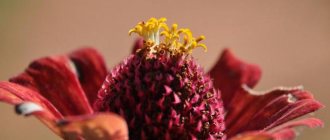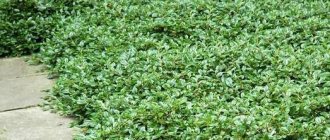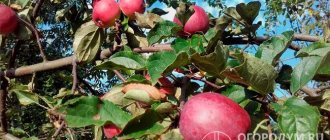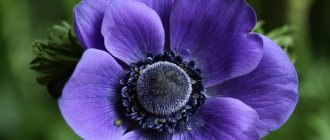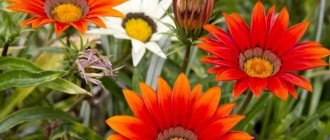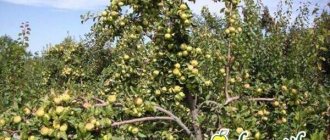Description of gooseberry variety Date
The shrub is vigorous, spreading, leafy, up to 2 m high. The branches are powerful, strong, arched or straight. The shoots are covered with medium-sized thorns, single, rarely double, absent at the tops. The root system penetrates deep into the ground up to 2 m.
Attention! Date gooseberry requires a large area for development.
The foliage is medium-sized, glossy, bright green in color. The color remains until it falls off. The shape of leaves on vegetative shoots is somewhat different from flower ones. The leaf blade has mild wrinkles. The teeth along the edge are large and blunt.
The ovaries of the flowers are identical, pale green, drooping. The inflorescences are small, white, with a noticeable green tint, drooping.
The fruits are round or oval, smooth, green in color. The weight of gooseberries is on average 15–20 g. The peel is dense, covered with a purple blush. On the sunny side, the pigmentation on the berry is darker. The pulp is juicy, sweet, with a characteristic sourness. The percentage of sugar in the berry is 9%, but in rainy summers the fruits grow at a lower rate.
Prevention
Treatment for preventive purposes is carried out to eliminate possible diseases or pests.
As soon as the first signs of pests are detected, the bushes should be treated with special means. The treatment must be carried out three times, the interval is maintained at fourteen days. The drug Fitoverm is recommended.
It should be noted that the appearance of powdery mildew implies the uprooting of infected plants due to the fact that treatment in most cases will not bring the desired effect, but time will be lost - the damage will spread to neighboring crops. Preventive treatment against powdery mildew is carried out regularly by spraying with Topaz.
Characteristics of the variety
Date gooseberry is a late-ripening, self-fertile variety, that is, it can form new ovaries after self-pollination of flowers. If you plant several bushes of this variety nearby, the yield will increase accordingly. The plant is able to develop quickly and produce new shoots. Date gooseberry fruits can only be obtained 4 years after planting. At 8–10 years the moment of active fruiting begins. Basically, the life cycle of the Date gooseberry is 25 years, however, according to reviews from gardeners, the duration can be longer.
Drought resistance, frost resistance
The berry crop has high frost resistance. It is able to withstand harsh winters with temperatures down to -35 °C. Thanks to its powerful root system, it can easily cope with drought, but a long period in the absence of moisture will negatively affect the size of the fruit. Excess water in the soil is also a negative factor for the full fruiting of gooseberries. It is not recommended to plant it in lowlands and areas with close groundwater.
Important! In regions with cold climates, Date gooseberry bushes require shelter for the winter, because temperatures below -40 °C can destroy them.
Productivity and fruiting
According to the description of the Date gooseberry variety, the berries ripen late. The period of technical ripeness begins in the second half of July, and full ripening occurs in mid-August. It is preferable to harvest in stages, as the fruits ripen. The berries on the lower branches ripen somewhat later than those on the illuminated part of the shoots. An average of 8–10 kg is collected from one bush.
On fertile soil, an adult Date gooseberry bush can produce a harvest of up to 25 kg.
Application area
The dense peel of the date gooseberry protects the berries from cracking. Therefore, they are good to transport over long distances and preserve without losing their shape. The fruits are used to prepare marinades, marshmallows, jelly, jam, and compotes. Date gooseberries are used for winemaking.
For canning, it is recommended to collect berries at the stage of technical ripeness, which occurs at the end of July. For table use, there is no need to collect gooseberries immediately. It can remain on the shoots and fall off for 20 days without compromising the taste of the berries.
The indicator assessing the degree of suitability of the Date gooseberry variety for storage and transportation is high.
Resistance to diseases and pests
The gooseberry variety Date is not a hybrid. For this reason, it is characterized by a characteristic disease of berry crops - powdery mildew. To protect the plant from this disease, it should be planted in well-lit areas. In general, the immunity of Date gooseberries is weak. But resistance against pests is high.
Advantages and disadvantages of the variety
Gardeners have been planting Date gooseberries on their plots for decades, without changing the variety. Some species have long been forgotten, but this one is in demand and relevant today. The main advantages of berry bushes:
- long fruiting period;
- stable, high fruiting;
- adaptation to adverse weather conditions;
- long shelf life;
- fruit size;
- self-fertility;
- the possibility of long-term growth in one place without loss of basic qualities;
- sweet taste of berries.
The disadvantages of the variety include:
- susceptibility to American powdery mildew;
- presence of thorns;
- late ripening of berries.
Advantages and disadvantages of the variety
The main advantages of Date:
- long fruiting period;
- stable and high productivity;
- large fruit;
- frost and drought resistance;
- good keeping quality and transportability;
- self-fertility;
- pleasant taste.
Among the shortcomings are noted:
- the presence of thorns on the shoots;
- prone to powdery mildew;
- late ripening of the crop;
- spreading of the crown, need for space.
Rules for planting gooseberries
Growing gooseberries of the Date variety begins with proper planting. Therefore, it is important to know: the place, the optimal time, and also what the process itself looks like.
Recommended timing
It is recommended to plant gooseberries of the Date variety in the fall, even in temperate climates. The most favorable time is the third ten days of September or the first days of October. Young gooseberry seedlings have time to adapt to a new place before the onset of cold weather, and in the spring the bush will quickly begin to grow. It is important to plan the procedure so that there are approximately 2 weeks left before frost.
Spring planting begins early, immediately after the thaw, around March, and in April it will be too late. The main thing is to be in time before the sap flow process begins.
Important! The survival rate in spring is significantly lower than in autumn.
Choosing a suitable location
Gooseberry Date reacts negatively when next to black currants. Fruiting is noticeably reduced, the size of the berry decreases, and the development of the bush as a whole worsens.
Conditions for choosing a place for sowing:
- The area should be well lit and sunny.
- It would be nice if you plant the berry bush in a windy place. This will reduce the likelihood of fungal infections. The ground also dries out faster after the snow melts.
- It is advisable to choose soil with a neutral or slightly acidic pH. Fruit growth slows down in acidic substrates.
- Date gooseberries grow well in loamy and sandy soils.
- Planting bushes in lowlands, marshy soils, and in places with close groundwater levels is excluded. Because excess moisture can cause rotting of the root system.
Selection and preparation of planting material
Before purchasing a Date gooseberry seedling, you should pay attention to:
- age – one- and two-year-old plants are suitable for planting;
- the roots must be elastic, flexible, free from rot and damaged areas;
- branching - the denser the young bush, the easier it will take root;
- cutting height no more than 30 cm;
- lack of foliage and new shoots.
Approximately 48 hours before the intended planting, the roots of the young Date gooseberry bush are placed in a container with a stimulating solution. To destroy possible bacteria and fungi, it is recommended to add a small amount of potassium permanganate, and 2 hours before the procedure, treat the rhizomes of the seedling with a clay mash.
Landing algorithm
Seedlings are purchased a week in advance, and preparations for the procedure begin 2-3 weeks before it begins. At the same time, they dig up the soil to a depth of 25–30 cm, removing weeds. Add to the soil:
- 8 kg of humus or manure;
- 2 kg of potash fertilizers;
- 4 kg of phosphorus fertilizers.
The norm is calculated for 1 sq. m. Date gooseberry bushes are planted on a quiet, cloudy day.
Further actions:
- Prepare a hole 40x40 cm and 60 cm deep. It is calculated that the distance between currant bushes is 1–1.5 m.
- Place the seedling in the hole and straighten the roots well.
- The plant is placed vertically to the surface of the earth. The date gooseberry seedling should be held in this position and at the same time sprinkled with soil.
- The root collar should be 8–10 cm above the ground surface.
- The soil on top is lightly compacted.
- Water each bush with warm water in a volume of 10 liters.
- The circle around the trunk is mulched with humus or peat 10 cm thick.
Attention! Date gooseberry shoots are pruned, leaving up to 6 buds.
Features of planting and care
To ensure a stable and high-quality harvest, gooseberries need sufficient lighting and fertilized soil. Considering the appearance of the bush: spreading, height, and how powerful the root system of Date is, when planting, a large area is allocated for this variety.
Planting is done as follows:
- Select high, light areas, above the groundwater level. Slightly acidic or neutral soil is preferred. If the site has acidic soil, you need to deacidify it in advance by adding dolomite flour. Gooseberries grow well in loam or sandy loam soils.
- Pits for planting are prepared in the fall. Holes are dug at a distance of two meters between rows and at least one and a half meters in a row. It is advisable to take into account that close proximity to fruit trees is undesirable for Dates, since their root system can inhibit gooseberry roots. The optimal dimensions for the hole are 60x60 cm, and the depth is 40–50 cm.
- For full development and further abundant fruiting of the bush, the planting hole is filled with rotted manure, at least one bucket, 150 g of superphosphate, 40–50 g of potassium nitrate or a large mug of ash are added.
- It is known that in fertile heavy soil the roots are located superficially, so sand is often added to the humus mixture, improving the mechanical properties of the soil and facilitating the penetration of roots into deep layers.
- After planting, the bush is watered abundantly at the rate of 1 bucket for each hole.
- Mulch with humus, ash or pine needles to prevent water evaporation and to protect against pests.
Gooseberries can be planted in the spring, but some gardeners believe that when planted in the fall, before frost, the bush has time to take root, and intensive growth and development occurs in the spring.
Recent Entries
5 working ways to use tar in the garden 7 indoor plants that help you get married even in adulthood Indoor plants that can bloom in trouble
Video: how to properly plant gooseberries in the fall
In the first years after planting, provided that the planting hole is saturated with a sufficient amount of fertilizer, the gooseberries are no longer fertilized. Care comes down to timely pruning. They try to carry out thinning pruning in the fall, so as not to injure the shoots again in the spring. And in the spring, they only remove weakened branches touched by frost. Of the zero shoots that grew from the roots, two or three of the strongest ones are left, the rest are removed.
A properly formed bush must contain branches of different ages for the normal functioning of the plant. This year's shoots provide the bush with young shoots, which will produce a harvest in the future. The most fruit-bearing branches are from three to five years old. They form the skeleton of the bush. Branches older than 6–7 years are pruned.
Video: autumn pruning of gooseberries
To prevent fungal diseases, gooseberry and currant bushes are spilled with boiling water in early spring. A hot shower protects not only from American powdery mildew, but also, according to summer residents, from some pests.
Video: spring treatment of bushes with boiling water
Treatment with boiling water does not completely eliminate the spheroteca, but significantly delays the onset of the lesion. To prevent spheroteca, it is also recommended:
- In early spring, spray the bushes with a 1% solution of copper sulfate or Bordeaux mixture.
- In autumn, treat with a concentrated solution of urea at the rate of 600 g per 10 liters of water.
- In spring, spray the bushes with an infusion of slurry. Add 10 liters of water to 1 kg of manure, stir well, filter and treat the bushes. The sediment is used as fertilizer.
- Use ash infusion for spraying. In a 10 liter bucket you need to pour 1.5 kg of ash, add water and leave for a week, then drain, add 50 g of grated laundry soap for adhesion and treat the bushes.
- Use Fitosporin as a biological protection against fungus.
Regular loosening of the tree trunk and weeding stimulate the growth of gooseberries, have a beneficial effect on its development and prevent diseases. If, nevertheless, the spheroteca has affected the gooseberry, the deformed tips of the shoots, leaves and berries are carefully removed and burned. In this case, depending on the intensity of the lesion, one of the following drugs is used:
- Topaz;
- Vectra;
- Alirin;
- Quadrix;
- Nitrafen No. 125.
All of these drugs are diluted and used in strict accordance with the instructions, observing safety precautions. For spraying, use only freshly prepared solutions, no later than three weeks before harvesting the berries.
Follow-up care for gooseberries
Further care of Date gooseberries involves the correct implementation of agrotechnical measures. Watering must be timely. These procedures are carried out up to 3 times a month. The depth of soil wetting is 40 cm. Approximately 4–5 buckets of water should be poured under the bush. The main thing is not to skip watering at the main moments: during the flowering period and the formation of ovaries.
There is no need to fertilize for the first 3 years after planting. And then every year, during the autumn digging of the trunk circle, humus, saltpeter, superphosphate, and wood ash are added to the soil. In summer, it is recommended to apply organic fertilizers.
In order to increase the air permeability of the soil, loosening is carried out. It is advisable to carry out the first procedure before the bush begins to grow, and then regularly about 5 times a year. The depth of loosening under the bushes is 7 cm, row spacing is 10 cm.
Towards the end of autumn, preventive pruning is performed. Remove broken, diseased, dry shoots, which will strengthen the Date gooseberry and ensure lush flowering in the spring.
Adult bushes can withstand cold weather, but young seedlings need shelter. Hill up the soil with a layer of 10 cm, and the upper part is covered with airtight material.
Reviews from summer residents
Gardeners speak positively about the variety.
Victoria, Tver: “Phoenix has been growing at my dacha for a very long time, I can’t even remember exactly how many years. I like that the maintenance of the bushes is minimal: I water it 3-4 times during the summer, feed it several times and prune it. The yield is good, the berries are large and tasty. The only drawback is that the fruits do not ripen at the same time; you have to first collect them from above, and later from the lower branches.”
Vasily, Tambov: “About 10 years ago I decided to plant gooseberries, and on the advice of a neighbor I bought date seedlings. Now there are 2 bushes of this variety growing on the site, and I am more than satisfied. They bear fruit annually and the yield is excellent. We eat the berries fresh and have enough for processing: my wife makes compotes and jam and grinds them with sugar.”
Diseases and pests, control methods and prevention
The most dangerous disease for date gooseberries is powdery mildew. It affects the bush and fruits, making them unattractive, inedible and underdeveloped. As a rule, preventive measures are taken to prevent the development of the disease, such as:
- spraying the bush with copper sulfate or Fitosporin;
- weed removal;
- collecting fallen leaves.
If a shrub of a variety is exposed to a disease, it is necessary to treat it with systemic fungicides and burn the affected parts.
Harvesting and processing
Date gooseberries reach technical maturity by the 2nd half of July, and consumer maturity by mid-August. The berries can be picked immediately after ripening or a little later, but it is better not to keep them on the branches for more than 20 days. Once collected, they begin to emit a strong, distinct aroma.
The use of berries of this variety is universal. They are very tasty fresh, but are also suitable for canning, baking, and freezing. Gardeners claim that Date gooseberries make excellent jam, juice, jam and summer desserts. You can make homemade wine from it; it will have a pleasant aroma and unusual taste.
Gooseberries Dates are suitable for baking
